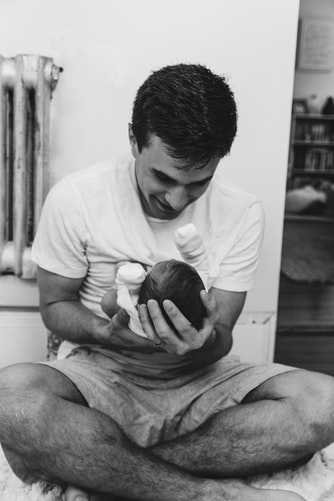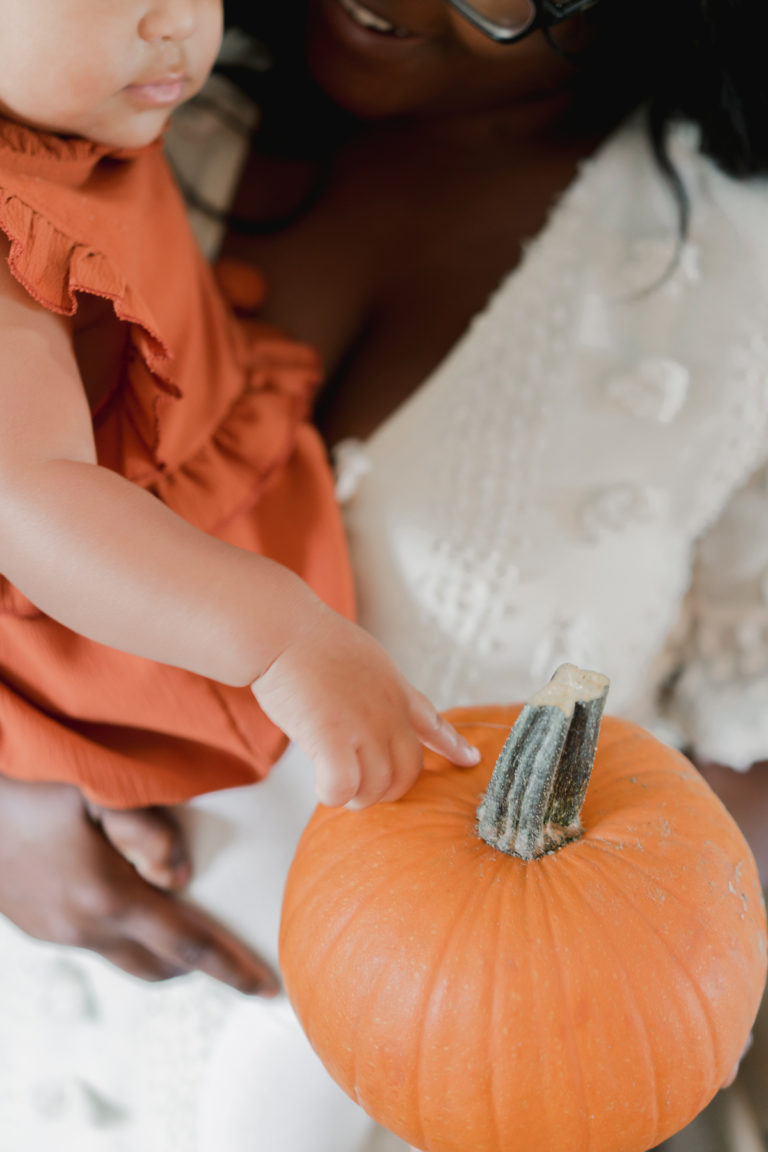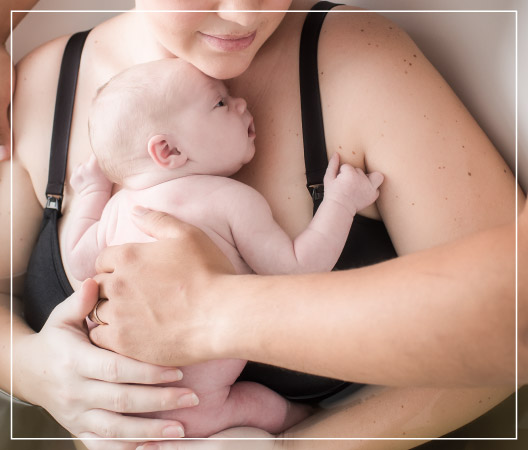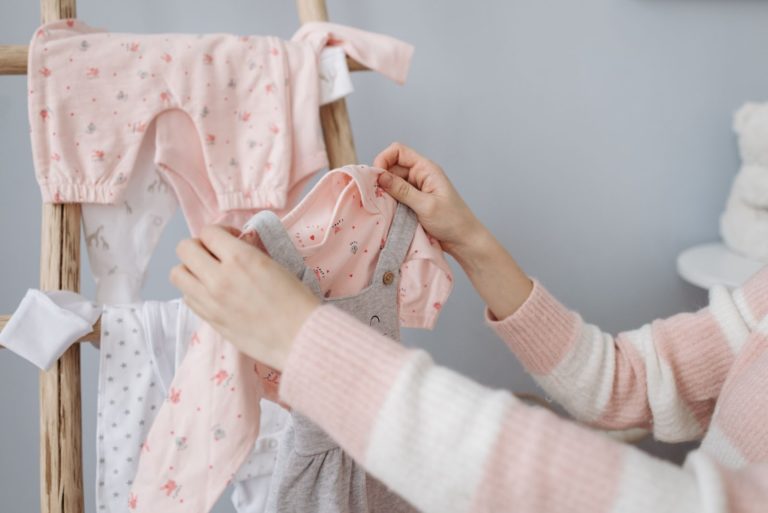How to Find the Perfect Car Seat: The Ultimate Buying Guide
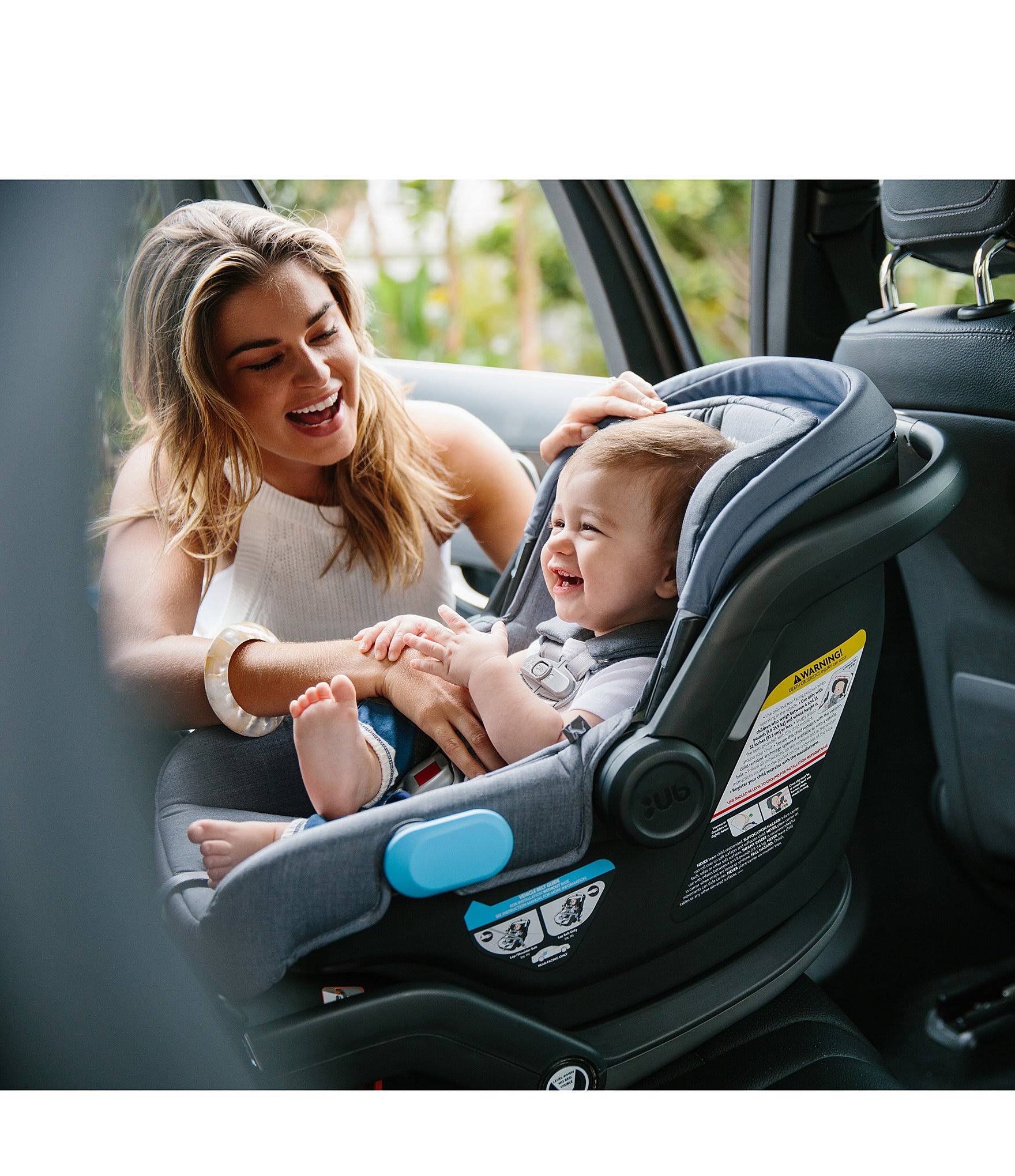
7 minute read
Expecting a little one? One of the most important, must-have items you’ll need is a car seat — you won’t be able to leave the hospital or birth center without one!
But finding the perfect car seat can feel a little daunting. Especially when there are so many options available! You may have a ton of questions swirling around in your mind… How do you avoid being “duped” by a pretty Instagram ad? Which car seats are the safest? What’s going to be the best fit for your child and family?
That’s why we created this Ultimate Car Seat Buying Guide to step you through the process. After reading this guide, you’ll have the information and confidence you need to select the perfect car seat for your family.
Ready to get started?
Types of car seats
Before you start shopping, it’s helpful to know a little bit about each of the 3 categories of car seats available to you:
- Rear-facing car seat: This type of seat is the safest for infants and toddlers to use. In a rear-facing seat, the baby faces the back of the car. These include: rear-facing only (commonly referred to as an infant seat), convertible, all-in-one, and multimode.
- Forward-facing car seat: This car seat faces the front windshield of the car and is appropriate for toddlers and preschoolers. These include: forward-facing only, combination, all-in-one, and multimode
- Booster seat: A booster seat positions your child so that the seat belt fits over the stronger parts of their body. These include: high back booster, no back booster, all-in-one, and multimode.
As you can see, even in these three broad categories, there can be a lot of overlap for each style of seat and the options it gives you. But narrowing down these options depends on many factors…your budget, lifestyle, child’s needs, and your car. Let’s dive in!
Types of car seats by age (infants, toddlers, and young children)
If you’re pregnant and shopping for your first car seat, your best bet is to start out with a rear-facing car seat. You’ll keep using this seat until your child meets the height or weight limits of the car seat (as recommended by the American Academy of Pediatrics). There is no longer any age limit (previously 2 years of age) for rear-facing car seats.
Why a rear-facing car seat? In the event of a crash, the rear-facing position absorbs most of the forces of the crash. It helps to cradle your child, reducing the amount of stress applied to your baby’s fragile neck and spinal cord. A rear-facing seat is the safest option for your little one. See the visual graphic below:
Image from The Times.
Once your baby meets the height and/or weight limits of their rear-facing seat, you can change to a forward-facing seat, and then later to a booster seat. It is important to remember, each step up in car seat stages is a step down in protection for the child, so always try to max out the limits in each mode for your car seat.
Here’s a simple guide to follow, taken from the National Highway Traffic Safety Administration (NHTSA):
Image from the National Highway Traffic Safety Administration
But remember, it’s always best to go by the height and weight of your child, versus age. Your car seat manual will have this information — all you have to do is track the height and weight of your little one.
How to choose a car seat that’s right for you?
Now comes the fun part! Finding which style of car seat will work best for you and your family. There are a few different options to choose from:
- Rear-facing only (aka infant seats): This is the first seat for most new parents. These seats fit newborns to infants up to 30+ pounds (depending on the car seat; make sure to check the weight limit of your seat in the owner’s manual). They’re rear-facing and have a removable carrier that attaches to a base that’s installed in your car.
When to buy? Plan to have a car seat at least 3 weeks before your due date — just to be safe!
- Convertible car seats: A convertible car seat provides flexibility as your baby gets bigger. When installed rear-facing it can accommodate up to 40-50 lbs, depending on the car seat’s weight limits. When installed forward-facing, it usually holds children up to 65 lbs. The forward-facing mode will have a harness to keep your little one safe.
When to buy? It’s best to have this car seat before your child’s first birthday.
Thinking of skipping the infant car seat and opting for a convertible car seat? This may save you some money…but there’s one thing to keep in mind. Although a convertible car seat’s minimum weight limit will accommodate newborns and infants, it may not provide the snuggest fit. Make sure to research the specific car seat you’re thinking of to see if it meets your needs.
- All-in-one (aka 3-in-one and multimode) car seats: These types of car seats are great if you want a seat that will grow with your little one from birth up to the booster-seat stage.
When to buy? If you’re planning to use this type of car from the get-go, make sure you have it ready at least 3 weeks before your due date.
A word of caution: There’s no question that an all-in-one car seat is definitely an economical option. But, some of these seats sacrifice doing any one task well, because they must do many things at once! Definitely research the specific seat you’re interested in and look for safety testing and reviews.
- Booster seats: A booster seat is the next step for kiddos that have outgrown the height and weight limits of a forward-facing seat with a harness. It’s important to note, booster seats are NOT child restraints, they are belt positioners. Do not rush to put your child in a booster. Your child should use a booster seat until they *they can pass The Five Step Test, which determines a safe seat belt fit. Your child should use a booster seat until they are big enough to use a seat belt properly.
When to buy? While some booster manufacturers allow booster usage for children as young as 4, our CPST Katie always recommends waiting until age 5 or older, unless your child has reached the height or weight limits of their harness.
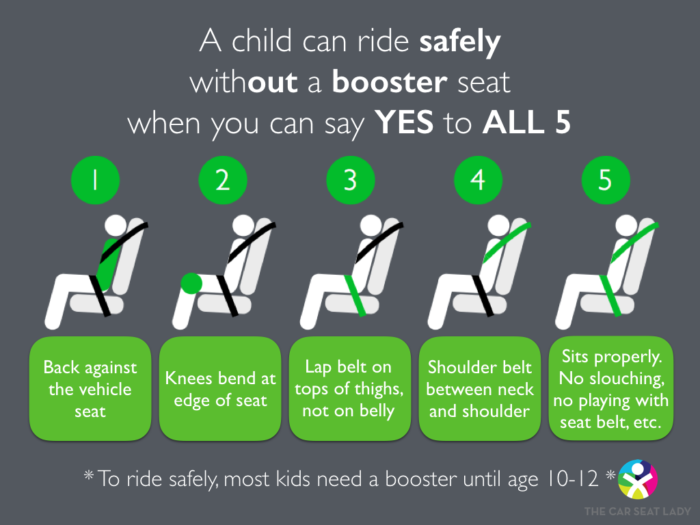
All car seats must meet national safety standards of the NHTSA. But some even go above and beyond with extra safety features. Make sure you follow the car seat manual’s height and weight limits along with the installation instructions. That way you’ll have peace of mind that your child is safe while riding in the car.
Check out the NHTSA’s free Car Seat Finder Tool, to find the federally-approved car seat options available for your child.
How to choose the best car seat
You may have an idea of the type of car seat you’re looking for, but narrowing it down to a certain brand and style can be tricky! Some helpful things to keep in mind while you’re shopping are: the size of your car, your lifestyle, family needs, and of course…your budget!
What type/size car do you drive?
Think about your own vehicle when you’re shopping. This is especially important if you have a smaller car. Some of the bigger infant and convertible seats could be too large to squeeze through the door!
Also, look at what year your car was made. If it was made after 2002, it should have a LATCH system to secure your car seat, rather than using the seat belt. Pay attention to the car seat’s installation details when you’re shopping around.
Do you have more than one vehicle?
If you have more than one car, you may want the flexibility to drive your little one in both vehicles. This may require you to purchase two car seats. Or you could look for one that’s easy to install and uninstall, allowing you to take it back and forth between each car as needed.
Pro tip: Consider finding a light-weight option to make these transitions even smoother!
Another alternative for infant car seats (or rear-facing car seats that snap into a base), is to buy two bases, rather than investing in two separate seats. This will make it even easier to get out the door and on the road with your little one.
Do you want a portable car seat?
If you’re thinking of installing the car seat, and leaving it there…then you have nothing to worry about!
But you may find yourself wanting a bit more flexibility.
Do you want to carry your baby in a car seat? Or to have the option to snap the car seat into a compatible stroller?
If the answer is ‘yes,’ you may want to opt for a car seat that has mobile options.
The good news is, there are tons of options out there! Look for a stroller that comes with a separate car-seat that attaches through an adapter or easy click-in system. Or a regular stroller that is adaptable for an infant car-seat.
But always remember to consider the weight of the car seat! This will become an important factor as your little one starts to grow!
What are your family needs?
Do you need to fit more than one car seat in the back seat? Do you drive people around often and need room for a passenger in the back? Make sure to measure your space and also keep in mind the width of your seats, if you need room for other people or kiddos!
What to look for when buying a car seat
When buying a car seat, it’s important to get one that fits your child, one that fits in your car, and one you can install correctly every time. But there are a couple final things to consider before adding a car seat to your shopping cart.
Make sure the car seat meets safety standards
All car seats must meet the National Highway Traffic Safety Administration and American Association of Pediatrics safety standards. Each organization has an approved products list, as seen on their websites here:
National Highway Traffic Safety Administration Approved Product Listing
American Association of Pediatrics Approved Product Listing
Pro Tip: Make sure to buy your car seat from a well-known store (Babies in Bloom, Target, Buy Buy Baby, etc.) to ensure the seat is not a knock-off or counterfeit. Be careful ordering a car seat from a website that uses third-party vendors (like Amazon). This increases your chance of getting a product that doesn’t meet federal safety guidelines.
Thinking of buying a used car seat?
Unless you know the complete history of the car seat and that it absolutely, 100% has never been in a crash…it’s best to steer clear of used car seats. Even if the car seat appears undamaged, there’s no way to know if any of the parts are compromised. Better to be safe than sorry!
Ready to start shopping for your perfect car seat?
Check out the Babies in Bloom Boutique for our favorite car seats, compatible strollers, adapters and accessories!
Our boutique saves you from endless hours of research on products. We’ve carefully selected the best and many of these products have been personally used by our team!
Stop by the store to chat directly with our experts to find out what will be best for you (and earn store credit in the process!).
Wondering how to install a car seat?
Stop by the Babies in Bloom Boutique to get personalized instruction from our very own Child Passenger Safety Technician! Katie will help make sure your car seat is installed correctly and show you how to use the child restraint system and seat belt properly.
Call 760-940-2229 to make an appointment or click here to schedule a visit.

